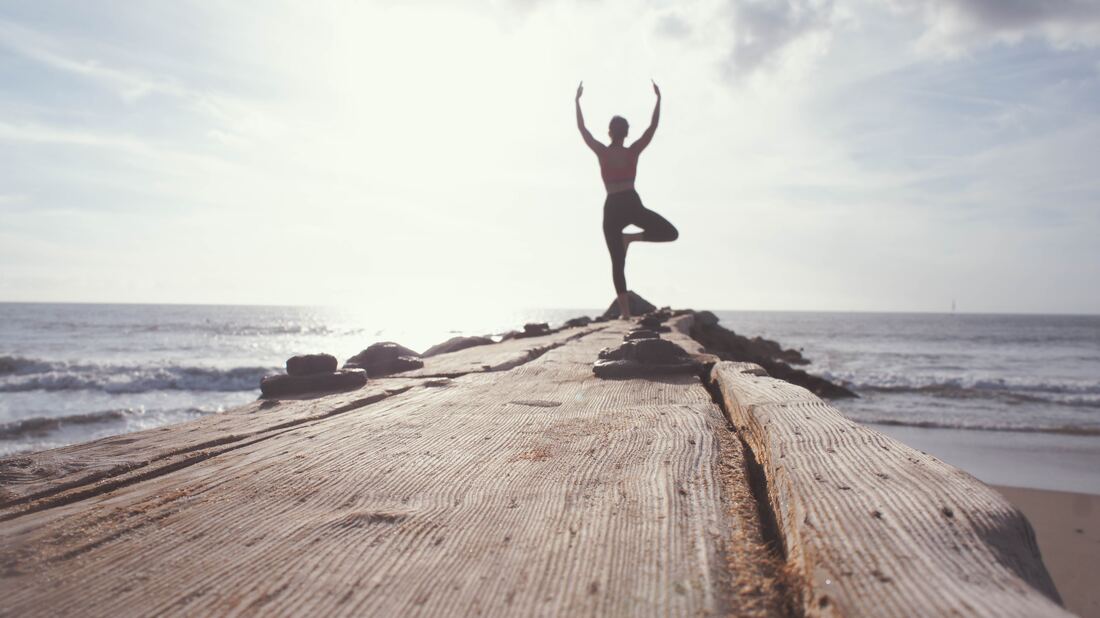 Image by Fathromi Ramdlon from Pixabay Image by Fathromi Ramdlon from Pixabay Ever feel like you’re having to choose between two paths, one leading you to good choices and the other leading to bad ones? Want to start living your life in ecstasy and benefiting from having good health instead of continuing to live life in agony? Then come to this Free Wellness Lecture on how to do just that by reducing inflammation, enhancing all body systems functions, slowing down the aging process and reducing pain. Join us for this limited time experience on Wednesday, June 10 2015 from 7pm to 8:30pm at Yonemoto Physical Therapy located at 55 S. Raymond Ave, Suite 100, Alhambra CA 91801. Please call (626) 576-0591 to RSVP. Seating is limited.
0 Comments
 도훈 이 도훈 이 My mom always told me to sit up and stand up straight. At school, girls walked with a book on their head to practice good posture. Now, after many years of working as a physical therapist, I realize my mother’s wisdom in emphasizing good posture. Many of my patients hate to hear these words because they bring up a very negative emotional response. Unfortunately, their mothers nagged them with the same words I am now using when I have them stand with their backs against the wall, trying to keep their buttocks, upper back and head lined up. Most of them cannot keep their heads against the wall, and even if I use a rolled up towel they can’t push the roll into the wall. Their chins point upward as their necks extend towards the wall with a hunchback look. Not only does this make you look old, but it reduces your balance, decreases how much air gets into your lungs, causes neck and back pain, shoulder limitations, and possibly even jaw disorders. There is a growing problem in the younger community with reliance on cell phones, tablets, and laptops, and even with students’ writing postures. There should be more emphasis on sitting up straight, angling writing surfaces similar to drafting tables, and using larger arm muscles to write in order to prevent fatigue. Using whole body mechanics is more efficient and aesthetically pleasing and results in more beautiful handwriting. I also advocate keeping both feet on the floor for good pelvic alignment, which also prevents high blood pressure, according to my Chinese medicine teacher. When you sit or stand up straight, try to align your ears with the shoulders. The shoulders should line up with the hips which, if you are standing, should line up with the ankles from a side profile. Start looking at people and see how much their heads go forward. Even a small distance forward can put a big increase in pressure in your lower back disks. Gravity will pull a forward head down, causing more effort by the neck muscles to keep the head from falling forward. This can explain constant soreness and hardness in many people’s neck and shoulders. When the head is aligned and balanced on the neck, almost no muscle power is needed to keep the head perched on the spine. It takes about 21 days of constant awareness to change a habit, but if you stick with it, you will be rewarded with better health, younger appearance and better organ function. If you are still responsible for the welfare of children, encourage them to stand up and sit up straight, but please, do it in a way that makes them want to do it for a lifetime. If you are already grown up and have a forward head, don’t despair, many of my patients are doing better! It takes a little work and encouragement but, under the guidance of a good coach, it is well worth the effort. Sheila Yonemoto, P.T., has been a physical therapist for more than 30 years, specializing in integrative manual therapy, utilizing a holistic approach. She can be reached at Yonemoto Physical Therapy, 55 S. Raymond Ave, Suite 100, Alhambra, CA 91801. Sheila also offers a Qigong “Chinese Energy” exercise class. Your first class is FREE. Call (626) 576-0591 for more information.
 Brooke Cagle Brooke Cagle Recently I attended a physical therapy seminar focusing on core/trunk stability and was shocked to find that a young, trim, healthy looking woman, who also happened to be a physical therapist, had a very unstable core and back pain. I have also heard of situations with young girls playing very competitive soccer having weak and unstable core muscles. I was dismayed to learn that in 3-4 years, female soccer players have a high percentage of knee injuries. I now feel very strongly that soccer for females should be banned, unless something is done to stop the progression of knee injuries in young girls. The current culture of using cell phones, tablets, video games, backpacks and other sedentary activities also contributes to poor posture, muscle weakness, muscle imbalances and early onset of arthritis, pain and nerve entrapment. What happened to all the moms and teachers who insisted on sitting up straight, and encouraged getting out and moving? I am seeing 30 year-olds with very slumped postures, having arm pain, jaw pain, neck pain, back pain and headaches. My optometrist mentioned to me that there is a direct correlation between eye strain and poor trunk tone, strength and posture, due to lack of activity, which often affects a child’s ability to learn. It’s harder to focus the eyes when the trunk can’t stay stable for long periods of time, which is what it is supposed to do, which makes reading more difficult and, ultimately, learning becomes harder. If this problem affects a young, relatively healthy and more active population, trunk or core instability probably affects many mature adults as well. This can contribute to balance problems, breathing difficulties, incontinence and lower energy levels. The good news is that something can be done about it. It might take a little work to bring awareness to the muscles that are responsible for keeping us upright, but it will result in using smaller amounts of energy and decreasing degenerative changes in joints. Physical therapists are experts in observing posture and movement and can guide people in getting stronger, moving around more efficiently and decreasing wear and tear on the body. Exercise classes are great for this as well, and getting a customized program to address specific problems is one way to make sure that imbalances are corrected first. Gym classes often focus on the larger movement muscles of the trunk and don’t pay attention to the smaller and less visible postural muscles that work most of the time. Moms used to say “stand up straight” and sometimes it turned into nagging that left emotional scars. I have to say, mom was right. Instead of rebelling against standing up straight, switch your thinking to developing a good stable core. You will have more energy, look younger, have better balance and may reduce a lot of strain on your knees and your eyes.  Image by skeeze from Pixabay Image by skeeze from Pixabay Many years ago Alhambra had the good fortune to interest a world-class runner, Lynn Jennings, in running in one of their Moonlight 8K races. She later went on to win the Bronze medal in the 1992 Barcelona Olympics in the 10,000 meters event. During her running clinic at Alhambra High School, she imparted some important information to the local high school track teams about avoiding running injuries. She never had a running injury in her entire running career, which is quite a feat, since most runners do not escape some form of injury. Even one of our own physical therapists ended a very promising career as a long distance runner due to his injuries. He had been considered Olympic potential at the height of his career. Her basic common sense advice was to listen to your body and rest when not feeling up to par, and slowing down the pace of training when needed. This advice is not always heeded according to writer, Joe Henderson, of Runner’s World, especially when runners live in a community and are not completely honest about listening to their bodies. They want to keep up their training schedule and sometimes do not let anyone know of their injuries. Fortunately for Lynn, she lived in a non-runner’s community and mostly trained in the woods of New Hampshire with her faithful dog. Another basic way to prevent injuries is doing adequate warm-ups and cool-downs, pre and post running events. The general rule-of-thumb is to start slowly and progress gradually, working your body up to a warmer temperature and even perspiring. Warms ups are done dynamically, meaning you move versus holding a position, while cool downs are characterized by static stretching. Studies show that static stretching done during the warm-up actually decreases muscle strength. An example of a dynamic warm-up activity would be standing next to a fence or pole, holding on, and slowly starting to swing the leg back and forth to increase the leg’s flexibility gradually for about 30 seconds (20-30 repetitions), and then repeat with the other leg. Your body should feel warmer and more flexible. You increase the intensity of the workout to mimic your event. Emphasis on what you would do depends on whether you are working on speed, endurance, terrain, mobility, or some other aspect. Equal time should be spent cooling down after the event to stretch out muscles, normalize blood flow and heart rate, and even incorporating core leg strengthening into your routine. Basic moves include hamstring stretching, quad stretching, calf stretching and hip stretching. The key is to progress gradually and safely. If, after your routine, you feel that you never want to do it again, it means you did it way too hard. Muscles adapt much more slowly than the cardiovascular system. Better to be safe than sorry. It makes for a much more pleasant workout and keeps you on course doing the things you want to do.  Marion Michele Marion Michele Recent lectures and reading that I have done point to statistics that cognitive decline is on the rise and surpassing other ailments in costs and concern over the utilization of resources in the future. The brain and the nervous system once damaged is hard to treat and return to normal, and studies are showing that development of these structures in the womb is influenced by nutritional factors that will set the course for the individual’s life. Never has it been truer as wisely stated by Ben Franklin in his Poor Richard’s Almanac that “an ounce of prevention is worth a pound of cure.” Researchers are putting more attention on diet and how it influences health as well as expression of good genes and bad genes. It is showing more and support that you are what you eat. There are studies that are showing that the highest carbohydrate diet is linked to a 90% increased risk in dementia and the highest fat diet is linked to a 44% decreased risk in dementia. A recent study looking at 3 groups of diets, the first allowing people to eat anything they wanted, the second eating a Mediterranean diet high in lean meats, vegetables, fruits, olive oil, and the third group eating a Mediterranean diet plus extra good fats, showed that the third group had a 30% reduced risk of heart attack, stroke and death compared to the other two. The researchers ended up stopping the study since the results were so significant in preventing heart attack, stroke and death, that they wanted to make sure the other two groups could also benefit from the third diet. Another study looked at long term effects of high carbohydrate diets and found that in 10 years, diabetes and obesity tripled. Some people are considering Alzheimer’s to be a form of diabetes of the brain, which doesn’t allow the fuel of the brain, glucose, to get into the cells and hence causes death of the brain cells. Higher levels of cholesterol are also being shown to be associated with lower risk of dementia, so much so that the FDA is now requiring pharmaceutical companies to put warnings on statin medication that lowers cholesterol since these are putting people at risk for dementia. There is also an increased risk of diabetes for women who are post-menopausal who are taking statins. Statins also reduce the body’s ability to produce co-Q 10, which is important for muscle energy production, hence the warning of muscle weakness as a side effect with statins. The heart and the brain uses a lot of co-Q 10. Cholesterol is also the raw material for developing vitamin D, which is now touted as the number 1 vitamin since it is important for bone health, immune function and acts more like a hormone than a vitamin. Gluten is a pro-inflammatory protein that is found in wheat, rye, oats, barley and spelt. It has been associated with muscle cramps, bone and joint pain, leg numbness, chronic fatigue, foggy brain, eczema/rash, gastrointestinal symptoms and depression. Gluten is like glue and interferes with the intestinal tract in absorbing nutrients. Since the gastrointestinal tract is also important in producing much of the neurotransmitters that are needed for brain function, this may be one reason for foggy brain. Exercise is a great way to produce antioxidants in the body that help give a protective effect for the damaging effects of free radicals, which can damage cells, cause accelerated aging, and can contribute to inflammation. Lifestyle habits can lead to health or illness. My experience has shown that it is not easy to make changes in your daily routine, but it can be done and done with great results. Find a way to make positive steps in the right direction, no matter how small a move you make. Be consistent and surround yourself with a good support system, helpful information and keeping your motivation high. Start eating more fruits and vegetables, take more walks, laugh more often and robustly, sleep more and drink more water. Don’t wait until you “have to do something or else you will die.” Do it now, while you are in the pre-disease state. You will live healthier and happier and will live a fuller life. |
Sheila’s BlogI focus on the topics you care about most. Categories
All
Archives
February 2022
|
|
55 S. Raymond Ave. Suite 100
Alhambra, CA 91801 Main Phone: (626) 576-0591 Alternate Phone: (626) 538-3966 Fax: (626) 576-5890 Email: [email protected] |
© 2015 Yonemoto Physical Therapy. ALL RIGHTS RESERVED.
|


 RSS Feed
RSS Feed